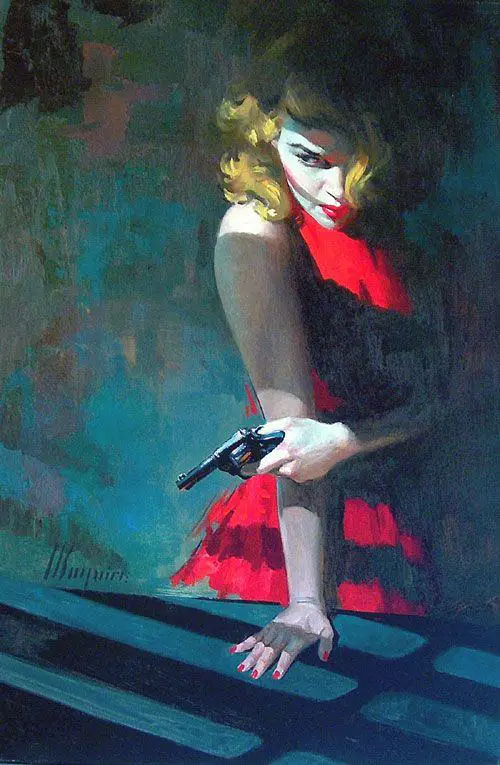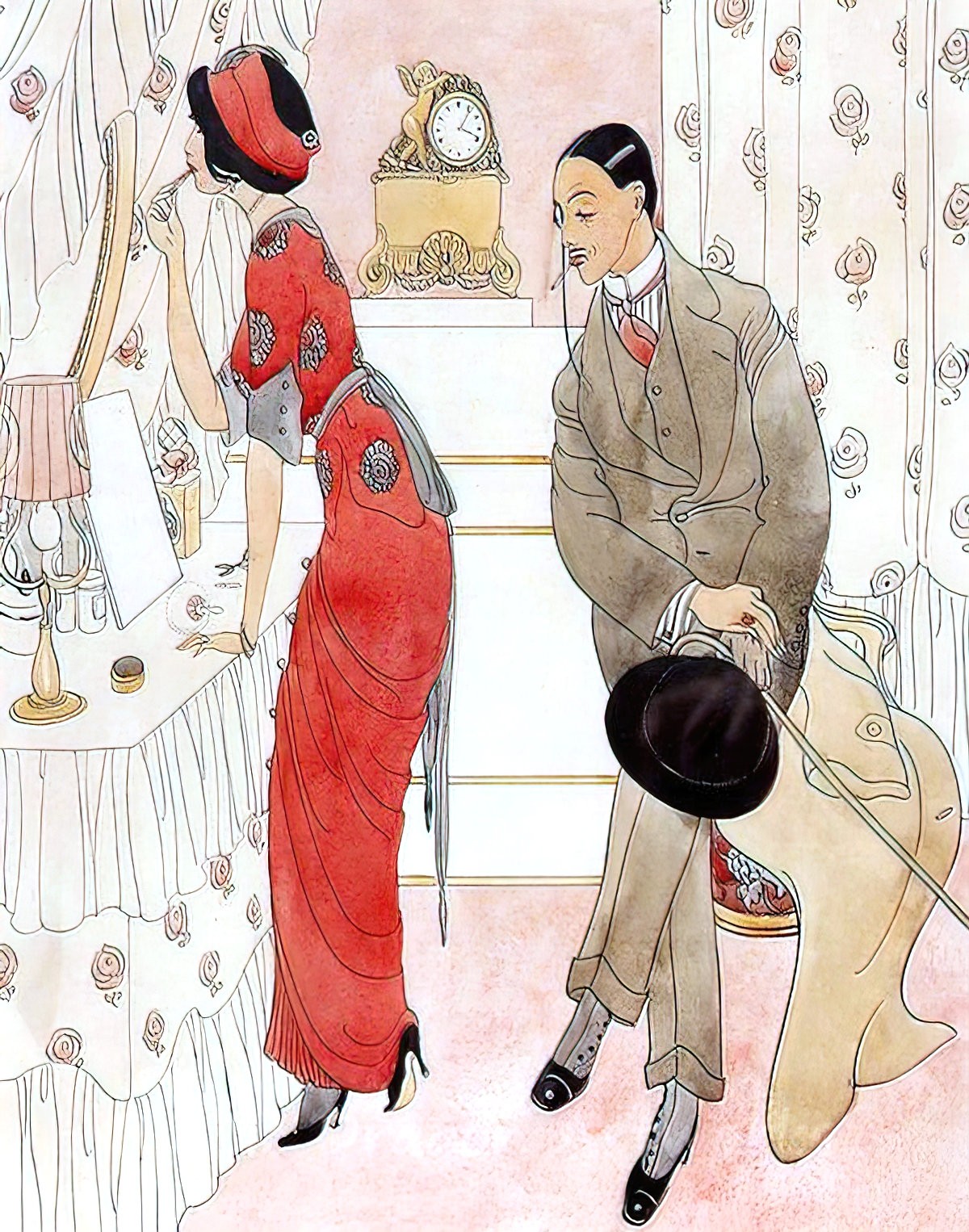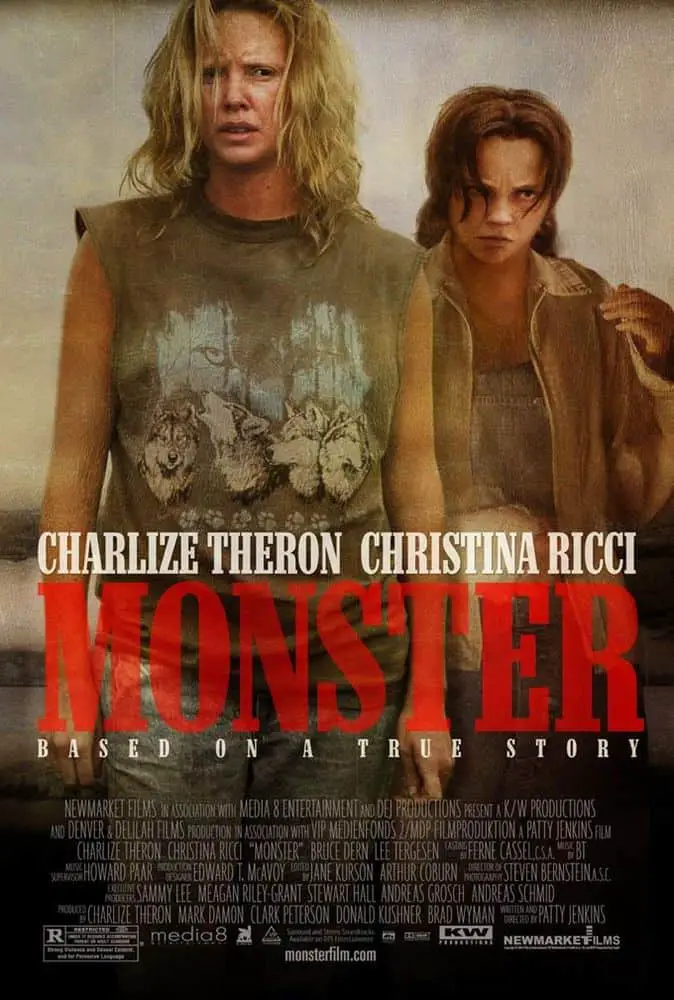There is a strong audience for stories about women who kill men. Storytelling seems to be going through the Age of the Woman Killer right now, with the popularity of Dirty John (podcast and TV series) and a much publicised movie about the Lorena Bobbitt case, which originally happened in the early 1990s. On Netflix you’ll find many TV series about murderers, as well as some about specifically female murderers. (Killer Women with Piers Morgan, Deadly Women.) In these shows, of course, the gender of the killer is presented as her defining attribute.
Among the many reasons why we love crime stories in general, I have wondered if stories about killer women serve to offer men the rare opportunity to consider what it might be like to be scared of a woman. But actually, my theory doesn’t hold up. The stories we tell about women who kill tend to reposition dangerous women back into the role of victim. Very few truly scary women are permitted to remain in our stories without a narrative arc which puts her safely back into her meek, feminine role.
However, I think the discussion around the #metoo movement is finally starting to change the way we tell stories about women who kill.

Facts about women who kill
- Across various countries, when women are murdered, nearly 1 in 4 are killed by an intimate partner.
- The intimate partner who murders is overwhelmingly likely to be male.
- Compared to how many women are beaten by intimate partners, women who murder those abusive partners are rare.
- But when women do kill their abusive male partners, it’s most likely after multiple counts of abuse. She likely fears for her own life at time of killing.
- Battered women syndrome describe this phenomenon. It is a psychological theory developed in the late 1970s. It is considered an outworking of the woman’s PTSD.
- If a woman uses this reason in court, she is considered mentally ill. [But is it mental illness, or is it a rational, logical self-defence to which anyone might be driven in the same circumstance? Any answer to that can work both for an against the woman in court.]
- In America at least, when women kill men, they most often use a gun. Even if they have wounded rather than killed, they’ve usually wounded with a gun.
- Gender has been under-researched in criminology. We don’t have a good understanding of the psychology of women who kill.
- Women who kill are less likely to have a criminal history.
The stories we tell ourselves about female victims
Whenever these facts are pointed out online, a proportion of voices points out that women can be annoying, and that women kill children too.
Pamela Hill Nettleton made the following observations in a study of magazine coverage of women who kill:
- There are few stories about women who fight back. This may contribute to a culture in which men feel they can abuse women without physical consequences. Perhaps this is why Dirty John is such a satisfying real life story. The ending is so rare, and includes wish fulfilment, for women, with an underestimated female killer who doesn’t know her own strength until it’s tested. Roald Dahl’s “Lamb To The Slaughter” is a purely fictional example of a cold, calculating woman who gets away with her crime. The novelty is that she doesn’t use the typical weaponry of guns or knives, and that it includes cannibalism. The type of cannibalism we are most afraid of: Women serving up humans as food. This is an ancient fear of women as in control of the domestic sphere, explored in an old fairy tale such as “The Juniper Tree“. But the novelty of Dahl’s story is also that this is not a character we associate with cold, murderous intention. Women who fight back are regarded as anomalies in real life situations.
- Women are held accountable for the violence men do. Sociologist Nancy Berns called this ‘degendering the problem and gendering the blame’. (Inversely, men are held responsibile for the good work women do. Let’s call that the Pygmalion Effect.)
- Male violence is seen as violence in general, with gender excised.
- But female victims are blamed for victim-like behaviours that are particularly attached to their gender.
- Women’s magazines tend to hold women responsible for male violence. (They choose violent men, they are passive, they are victims, they are shameful for choosing to stay with men with children even after learning the men are violent.)
- Men’s magazines treat violence against women with humour with no responsibility put on men as a gendered group. (They are not told to curb their anger and stop hitting women.)
- Women are advised to: Choose different men, avoid adding stress to men’s lives, move far away, change their names.
- Descriptions of victims often highlight their mental physical and emotional problems, or the couple’s financial problems. Domestic violence is described in terms that assign equal blame to victim and perpetrator.
- This creates a story in which domestic violence is seen as an inevitable occurrence.
- At first media depicts battered women as mad, later in the narrative they depict her as bad. This is known as the mad then bad pattern. Mad = emotionally abused to the point where she is mentally ill. Bad = scheming, manipulative. These women are depicted as helpless victims, until they’re behind bars. Then they are described as ‘safely’ behind bars and we’re all good with it.
Charlotte Bunch writes that if one ethnic national group were attacking another, killing and maiming them at the same rate as men attack and kill women (and she is speaking only of attacks by intimates), the situation would be held to constitute a state of emergency or even war. But domestic violence is only one campaign in what amounts to a widespread war against women.
Marilyn French
The stories we tell ourselves about female killers
- Women who kill are sensationalised, titillating stories. In fiction, “The Woman At The Store” by Katherine Mansfield sexualises (in a disgusting way) a female character. The reveal is that this woman has killed her husband. Annie Proulx does the same thing in “The Wamsutter Wolf“. In both stories, the murder is kept off the page, and the reader is left to deduce the violence. In both cases, the woman’s sexuality is underscored—written to disgust and to scare the reader in what amounts to psychological horror rather than gore.
- Women killers are described as frightened rather than fearsome.
- Women killers are described as feminine, with femininity emphasised. (Attractive, meek weak, small size compared to their victims, description of clothing and make up, polite, timid etc.)
- Women killers are sexualised. So are their crimes. (Femmes fatales, high heels, seductress etc) When a woman kills a female lover, it might be described as a ‘cat fight’.
- We like stories in which women killers don’t mean to kill. Case in point, Thelma & Louise.
- Women killers get a backstory (ghost). Everyone wants to know what motivates them. We want to know their history of past abuse over time. “A Rose for Emily” by William Faulkner is all about the troubling back story of a woman who kills. We deduce she is obsessive, a shut-in, not quite right in the head.
- Stories about women who kill tend to dwell on the point where she picks up and uses her weapon. Writers tend to consider a women who kills a ‘man bites dog’ story. Similarly, in other types of stories there tends to be a strong emphasis on a certain aspect of it. You won’t find a Hansel and Gretel story without the edible house. More problematically, in stories about transgender experience, there is often uncalled for emphasis on the transformation itself (the application of lipstick, the putting on a dress, the surgeries, in the case of male to female transitions). In portal fantasies, a completely different (and benign example), there is emphasis on the portal itself. In storytelling in general, audiences crave emphasis on ‘transitions’. The point where a woman has enough and picks up a gun is equivalent — in universal storytelling terms — to her Anagnorisis followed by her Battle (the murder), and the consequences are her New Situation.

- These stories are also redemption stories. As part of her redemption, she is returned to a more acceptable version of femininity: penitent, regretful, truly subordinate.
- The audience is invited to gaze upon the broken and battered body of the female murderer — abuse which happened prior to her crime. This moves the woman to a more comfortable place for the audience — from predator to victim.
- As part of the Plan part of the story of women murderers, stories suggest her plan should have been to simply leave her male batterer. As a fictional story, this may satisfy an audience. As a real life scenario, this is completely unrealistic. When women leave their abusive partners, the risk to their life becomes severely magnified. Leaving is the most dangerous thing she can do.
What we don’t tell in our stories about women murderers
There are several concepts we might turn to when talking about missing narratives. Stuart Hall has shaped the field of racial and ethnic studies. He talks about ‘the silences’. See Policing The Crisis, 1978.
There’s also the phrase ‘symbolic annihilation’, a term coined by George Gerbner in 1976 to describe the absence of representation, or underrepresentation, of some group of people in the media (often based on their race, sex, sexual orientation, socio-economic status, etc.)
The silences in narratives about women who kill
- Stories of women who describe their decision to kill as necessary, despite being tragic, regrettable etc. (The only time I’ve seen this narrative is in a news program, during an interview with female prisoners. These women are viewed as unrepentant and it surely affects their parole and length of sentence.)
- Stories which go into the wider culture in which this happens. Apparently, the new Lorena Bobbitt movie is a welcome change in this respect. It took Western culture more than 20 years to produce a reframing of this narrative, which I still remember everyone treating as a joke, even though I was 15 at the time, and living a world away in New Zealand.
- Narratives which portray women murderers as strong and dangerous and deliberate.
- Narratives which hold men responsible for stopping the cycle of abuse.
- Stories which challenge the idea that battered women syndrome is a fact of life, and that men will be killed occasionally as a result, and that law enforcement will inevitably let women down in this regard (but they are doing their best).
- Stories about concerned and caring men speaking out about other men who are abusive. Genuinely good men are rendered invisible in the media.
- Stories about powerful, accomplished and capable women who find themselves in an abusive relationship. (Dirty John is a welcome new change in that regard, as well.)
- Stories about the role of patriarchy in creating male violence. (The Gillette ad of early 2019 was perhaps an example of that kind of narrative. It did not go down well.)
FOR FURTHER INVESTIGATION
If you’re a fan of true crime, definitely check out the Wordery podcast Real Crime Profile. With Laura Richards’ involvement, this is one of the few true crime shows which really gets it. Each week the hosts take a parallactic view of a true crime TV show.

